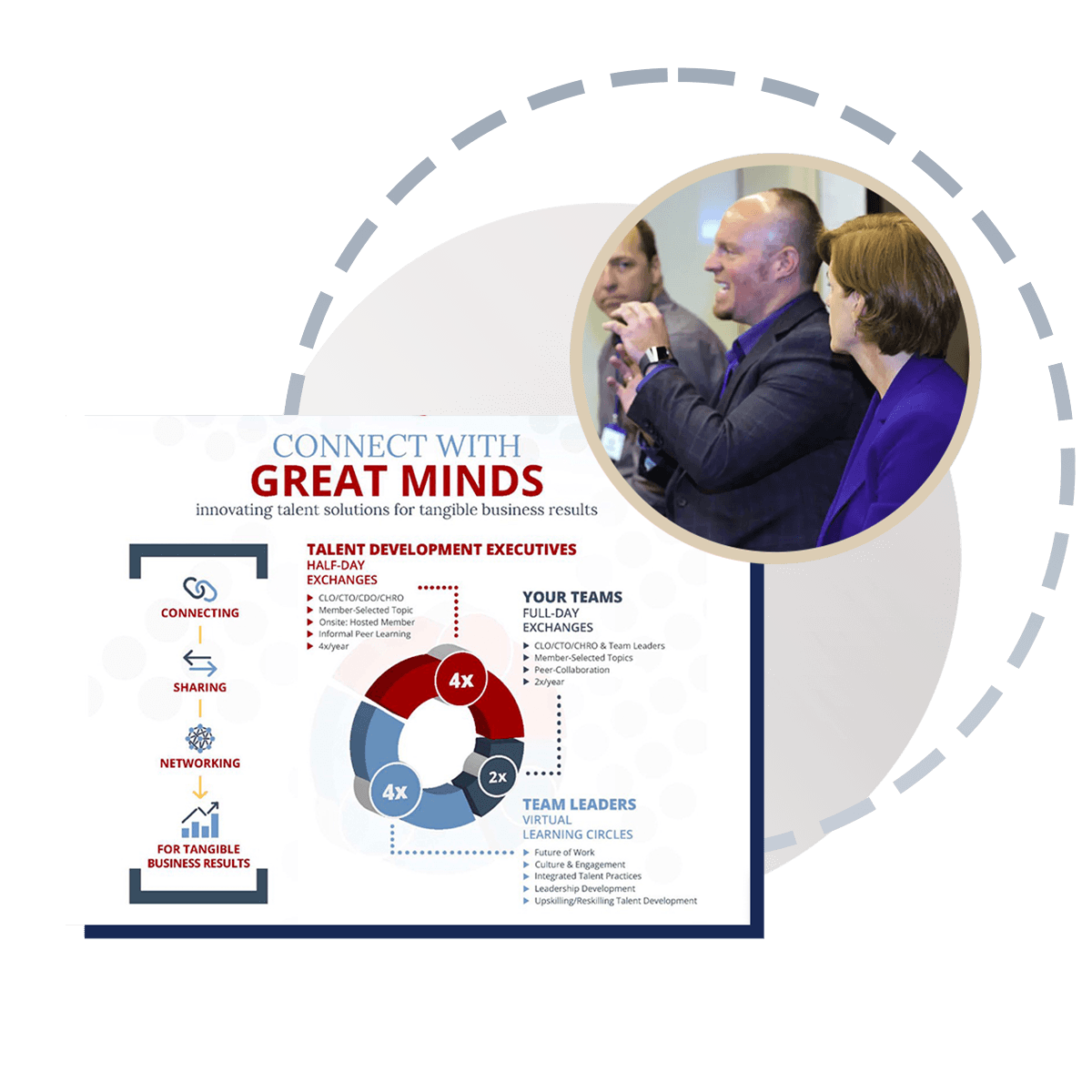Session Focus: Strategies Talent Leaders Can Use to Navigate the Challenges of the AI-Enhanced Workplace.
This interactive roundtable provided a candid, grounded discussion on how AI is reshaping workplace learning and leadership development—with new opportunities and new risks.
As AI tools move rapidly into coaching, feedback, and employee wellbeing, senior HR leaders face a challenge: how to scale learning in ways that deepen—not flatten—human leadership capacity.
“AI should build human capacity—not become a learning crutch.” — Michelle Gonzales, West Bend Insurance.
This was one of the key insights from our recent ELE peer discussion on thriving in the AI era—an open conversation on where AI is helping, where it’s creating new risks, and where HR leaders must set clear guardrails.
Key Takeaways
- L&D must lead enterprise AI readiness
L&D plays a pivotal role in building organizational AI fluency and ethics awareness—equipping employees to use AI critically and responsibly. - AI can scale learning—but not replace human interaction
AI enables judgment-free practice (e.g. 360 feedback, sales coaching), but can create an illusion of safety that lacks the accountability and emotional nuance required for real leadership growth. - Data ethics and transparency are non-negotiable
Employees must know exactly how their AI data is used. Without transparency, trust will erode.
“Trust depends on transparency. Employees must know exactly how their AI data is used—or we risk losing trust altogether.” — Deepa Kartha.
- AI should enhance—not diminish—human leadership capacity
AI can automate routine feedback and scale coaching, freeing humans to focus on complex judgment, empathy, and innovation. HR must design AI use that strengthens—not undermines—these capabilities.
Practical Actions for Senior HR Leaders:
✅ Champion AI literacy: Lead the development of critical AI skills and ethics awareness across your organization.
✅ Set clear data standards: Collaborate with legal and data teams to ensure AI data practices are transparent and trusted.
✅ Design human-centric learning: Use AI to enhance—not replace—leadership capabilities like judgment, empathy, and connection.
✅ Foster critical engagement: Encourage employees to challenge AI outputs, avoiding blind acceptance.
✅ Watch for learning crutches: Regularly evaluate where AI is helping—and where it may be dulling human leadership skills.
AI is now embedded in how employees learn, reflect, and grow—but it brings new complexity.
HR leaders cannot delegate this responsibility to IT or data teams alone.
How we frame, govern, and design AI use in leadership and learning will shape the future of trust, culture, and leadership readiness.
We must ensure that AI supports—not undermines—critical human leadership capabilities: judgment, empathy, courage, and connection.
 Source: Infographic from How People Are Really Using Gen AI in 2025 (HBR April, 2025)
Source: Infographic from How People Are Really Using Gen AI in 2025 (HBR April, 2025)
The question isn’t whether we use AI. The question is: will we use it well? Share with us on ELE Idea Exchange.
